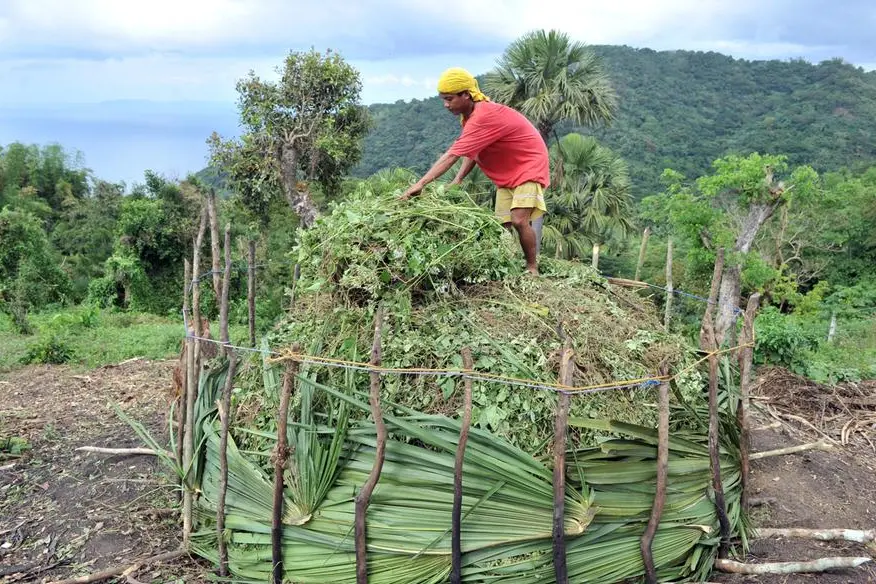PHOTO
In this photo taken on January 13, 2011 shows a resident gathers grass-vines to be used in making charcoal at a village popularly known as "Little Italy", in Mabini, Batangas province, south of Manila, owned by an overseas Philippine worker now working in Italy. On an isolated hillside in the Philippines, a tiny slice of Italy has risen from among the vegetable patches and coconut trees, the product of hundreds of overseas workers. This new wealth comes via the remittances of residents-- including entire families-- who have gone to Italy to work, turning a district of subsistence farmers into a prosperous community in a generation. AFP PHOTO/TED ALJIBE (Photo by TED ALJIBE / AFP) Image used for illustrative purpose.
Vegetable and egg prices are expected to go up amid the devastation caused by Typhoon Carina and monsoon rains, according to the Department of Agriculture (DA).
As of Saturday night, damage to the agriculture sector had reached P612 million, said DA Assistant Secretary and spokesman Arnel de Mesa.
Of the amount, P507 million in damage was recorded in the rice sector; P58 million, corn production; P46 million, high-value crops and P411,000, livestock and poultry.
'Lowland vegetables are affected, especially those used to cook pinakbet, as many areas were flooded, but there are areas we can tap as an alternative source of supply,' De Mesa said yesterday.
Egg producers yesterday said that a steady increase in the retail price of eggs is expected.
'There was no reported big damage in farm facilities, but retailers and traders were affected as eggs in warehouses in Quezon City and Manila were damaged by the flooding,' Philippine Egg Board Association president Francis Uyehara said.
'The increase (in egg prices) is not that big, but I am not sure what will happen toward December or the holiday season,' he noted.
As for rice, De Mesa said there is no reason for rice prices to go up as it is covered by the price freeze following the declaration of a state of calamity in Metro Manila and nearby provinces.
'(The price freeze) covers basic commodities, including rice in areas under a state of calamity,' he said.
Central Luzon was the hardest-hit region in terms of agricultural damage at P350 million, he said.
'The damage was big in Pampanga with P228 million, followed by Tarlac, P100 million; and then Region 6, P25 million; Mimaropa, P22 million; Region 12, P65 million. Also affected were Caraga, Zamboanga, Eastern Visayas and Bicol region,' he said.
Despite the damage, De Mesa said it would not affect overall palay production as crops were still in the vegetative stage.
'As of now, the volume loss for palay is 8,000 metric tons, affecting about 26,000 hectares. This is still within the limit of our losses as we expect 500,000 to 600,000 year-on-year. We are still expecting La Niña and we are hoping it will no longer increase,' he said.
Copyright © 2022 PhilSTAR Daily, Inc Provided by SyndiGate Media Inc. (Syndigate.info).The Philippine STAR





















